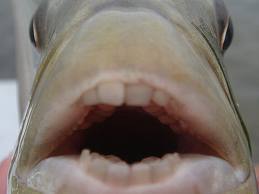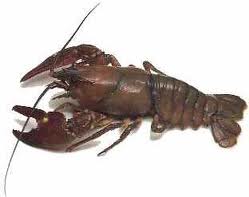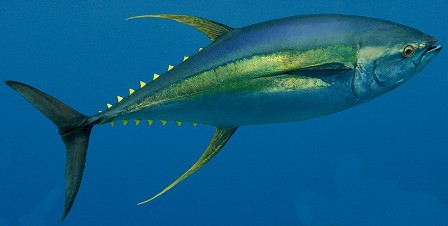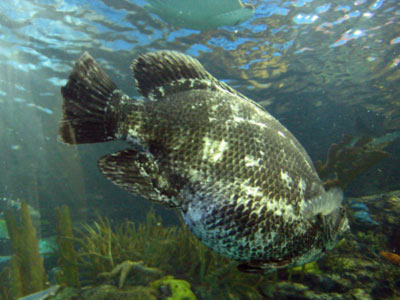Products
The sheepshead is a marine fish that grows to about 30 in, but usually only reaches 10 to 20 in. It is deep and compressed in body shape, with 5 to 6 dark bars on the side of the body over a gray background. It has sharp dorsal spines. Its diet consists of oysters, clams, and other bivalves, and barnacles, fiddler crabs, and other crustaceans. It has a hard mouth, with several rows of stubby teeth, which help crush prey.Although the Sheepshead Bay section of Brooklyn, in New York City, was named after the fish, it is almost entirely a southern species: its range extends from the Mid-Atlantic to Texas. As sheepshead feed on bivalves & crustaceans, successful baits include shrimp, sand fleas, clams, fiddler crabs, and mussels. Sheepshead have a knack for stealing bait, so a small hook is necessary. Locating sheepshead in a boat is not difficult: fishermen look for rocky bottoms or places with obstructions, and they try around jetties and the pilings of bridges & piers. The average weight of a sheepshead is 3 to 4 pounds, but some individuals reach the range of 10 to 15 pounds. Sheepshead is best when baked, but is great when grilled, broiled, fried. Crawfish, also called crayfish or crawdad, are closely related to the lobster. More than half of the more than 500 species occur in North America, particularly Kentucky (Mammoth Cave) and Louisiana in the Mississippi basin. Crawfish also live in Europe, New Zealand, East Asia and throughout the world, including the Tristan da Cunha Islands. Nearly all live in freshwater, although a few survive in salt water. Crawfish are characterised by a joined head and thorax, or midsection, and a segmented body, which is sandy yellow, green, or dark brown in colour. The head has two pairs of sensory antennae, a sharp snout, and the eyes are on movable stalks. The appendages, or pereiopods, of the thorax include four pairs of walking legs which, as well as walking, are to probe cracks and crevices between rocks looking for food. Crawfish also own one pair of clawbearing chelipeds, which it extends in front of its body while moving. These strong pinchers are specialised for cutting, capturing food, attack, and defence. The crawfish also has several pairs of specialized food handling “legs,” bailers to cycle water over the gills, and five pairs of swimmerets which are under the abdomen. All of these “legs” can be regenerated if broken off. Crawfish are usually about 3 inches long. Crawfish have a hard outside skeleton. This jointed exoskeleton provides protection and allows movement, but limits growth. As a result, the crawfish regularly gets too big for its skeleton, sheds it, and grows a new larger one. This is called molting. and occurs six to ten times during the first year of rapid growth, but less often during the second year. For a few days following each molt, crawfish have soft exoskeletons and are more vulnerable to predators. Most crawfish live short lives, usually less than two years. Therefore, rapid, high-volume reproduction is important for the continuation of the species. Many crawfish become sexually mature and mate in the October or November after they’re born, but fertilization and egg laying usually occur the following spring. The fertilized eggs are attached to the female’ swimmerets on the underside of her jointed abdomen. There the 10 to 800 eggs change from dark to translucent as they develop. The egg-carrying female is said to be “in berry,” because the egg mass looks something like a berry. Females are often seen “in berry” during May or June. The eggs hatch in 2 to 20 weeks, depending on water temperature. The newly-hatched crawfish stay attached to their mother until shortly after their second molt. The lobsters that most people know from their dinner plates are the American and European clawed lobsters Homarus americanus and Homarus gammarus. These are cold water species that live on either sides of the northern Atlantic Ocean. There are also tropical lobsters that are consumed, but these are generally clawless varieties called spiny and slipper lobsters. Lobsters are ten-legged crustaceans closely related to shrimp and crabs. These bottom-dwelling, creatures are found in all of the world’s oceans, as well as brackish and freshwater environments. They have poor eyesight but highly developed senses of taste and smell. They feed primarily on fish and mollusks, but will consume algae and other plant life and even other lobsters. Female lobsters carry their eggs under their abdomens for up to a year before releasing them as larvae into the water. The larvae go through several stages in the water column before settling on the bottom, where they spend the rest of their lives. They generally prefer to live in self-dug burrows, in rocky crevices, or hidden among sea grasses. Lobsters must shed their shells in order to grow, and some species can live to be 50 years old or more, growing continually throughout their lives. Lobsters have not always been considered chic eats. In 17th- and 18th-century America, they were so abundant in the northeast that they were often used as fertilizer. Laws were even passed forbidding people to feed servants lobster more than twice a week. However, improvements in U.S. transportation infrastructure in the 19th and 20th century brought fresh lobster to distant urban areas, and its reputation as a delicacy grew. Did you know that President Abraham Lincoln used to have Oyster Roasts in Illinois? Me neither – and I grew up in the state. The Pilgrims had oyster roasts here on the east coast as well. There are piles of shells that historians have used to prove it. Here in South Carolina, we have some of the sweetest, saltiest oysters available – often touted as the “tastiest in the world” – our Eastern oyster is the Crassostrea virginica. The real question is though – what to do with those shells when you are through? There are oyster shell recycling programs in our area. Click here The skate is a member of the ray family but is distinguished from most other members of that family in that they lack a tail barb or stinger. Skates are a kite shaped fish that have a flat body and two wings. The wings are the only part of the fish that is consumed. Skates give birth to fertilized eggs in an egg case. The case is often called a “mermaid’s purse.” The mother skate deposits egg cases, which have tendrils that anchor them to seaweed or rocks. The mother does not protect the egg cases during the 6-9 months that the skates develop in their cases. Skates develop slowly and can live as long as 50 years. Many species do not breed until after they’re eight years old. Skinning: Skate skin must be removed. It’s basically shark skin and shark skin is gritty with scales that are built more like teeth than like regular fish scales. They don’t scrape off. Male skates may also have some sharp spines out on the wings. Lay out your wing on the cutting board, thick side up. Pry up a corner of the skin at the thick corner and carefully scrape flesh away from the skin until the skin pulls clean without taking any flesh. The skin will now pull off, but takes some strength and it’s slippery, so grasp it with your long nose pliers and pull right off the thin edge. If you’ll be using the cartilage and/or the thin side meat, skin the thin side too. Cooking: Most recipes for skate call for it to be pan fried, though some call for poaching. In either case, keep in mind that the skate filet is not only thin but it’s deeply grooved, which allows fast heat penetration. Take care not to overcook, particularly when poaching or your fillet may fall apart on the corrugations. You can grill skate wings leaving the fin rays in and serve it that way. Use a rub or sauce suitable for grilled fish. Hearty eaters may eat it rays and all (depending on size), though the finicky may flake the meat off. Note that you’ll want to serve skate wings corrugated side up (the skin side), so you’ll want to fry that side first. When you turn the fillet over with the cut side down it will curl some toward that side. This will tend to emphasize the corrugations. The word “grouper” comes from the word for the fish, most widely believed to be from the Portuguese name, garoupa. Groupers are teleosts, typically having a stout body and a large mouth. They are not built for long-distance fast swimming. They can be quite large, and lengths over 3 feet long and weights over 200 pounds are not uncommon, though obviously in such a large group species (there are over 13 different species) vary considerably. They swallow prey rather than biting pieces off it. They do not have many teeth on the edges of their jaws, but they have heavy crushing tooth plates inside the pharynx. They tend to eat fish, octopus and crustaceans. They lie in wait, rather than chasing in open water. Their mouth and gills form a powerful sucking system that sucks their prey in from a distance. They also use their mouth to dig into sand to form their shelters under big rocks, jetting it out through their gills. Their gill muscles are so powerful that it is nearly impossible to pull them out of a cave if they feel attacked and extend those muscles to lock themselves in. Most fish spawn between May and August. They are protogynous hermaphrodites, which means the young are predominantly female, but transform into males as they grow larger. They grow about a 2.5 pounds per year and generally they are adolescent until they reach about 7 pounds, when they become female. At about 25 pounds they turn to male. Usually, males have a “harem” of three to fifteen females in the broader region. If no male is available, the largest female turns male. Torpedo shaped and beautifully colored, yellowfin tuna are members of the very large mackerel family. Tuna are one of the world’s most important food fish. Found in warm ocean waters, they restlessly roam the deeper offshore waters of Florida’s Gulf and Atlantic Coasts. They travel in schools and are rapid swimmers feeding primarily on fish, squid, crab larvae and shrimp. Yellowfin tuna can weigh up to 300 pounds but average weights in commercial catches are between 20 and 100 pounds. In Florida, yellowfin are commercially harvested exclusively with hook-and-line which makes the fishery “dolphin-safe”. Yellowfin tuna are versatile food fish and the meat is consumed raw, cooked, smoked and canned. The lean meat is widely used in sashimi, raw fish dishes popular in Japan and a connoisseur’s delicacy in the United States as well. Yellowfin tuna steak has a firm, dense beef-like texture which makes it excellent for grilling and is traditionally cooked rare to medium-rare in the center as for beef steak. Characteristics: The extra lean meat is firm and dense with a large flake and a sweet, mild flavor. Meat color ranges from pink to deep red but becomes ivory white to tan when cooked. Substitutes: Swordfish, mahi-mahi and king mackerel. Yellowfin are metallic dark blue on the back and upper sides, changing from yellow to silver on the belly. The dorsal and anal fins, and finlets are bright yellow. Tuna species are difficult to distinguish. Bigeye, blackfin, albacore and yellowfin are similar in shape and are often caught together. Characteristics that distinguish the yellowfin from other species are its elongated anal and dorsal fins on large fish, a moderately smooth non-striated ventral surface of the liver and 26 to 34 gill rakers on the first arch. Yellowfin tuna inhabit warm waters of the Atlantic, Pacific and Indian Oceans and all warm seas except the Mediterranean. In the western Atlantic, the species is found from Massachusetts to Brazil, including the Gulf of Mexico and the Caribbean. Spawning takes place at sea in the spring and summer, and most fish are capable of reproduction at the age of 2 or 3 years. Yellowfin feed in open ocean waters on fishes and invertebrates associated with Sargassm. Atlantic Striped Bass just so happens to be the state fish of South Carolina as well as Rhode Island and Maryland. It is also the state saltwater fish of New York, Virginia and New Hampshire. They are also found in the Minas Basin and Gaspereau River in Nova Scotia Canada. The Atlantic Striped Bass, also called stripers, linesiders, rock, pimpfish,or rockfish has a streamlined, silvery body marked with longitudinal dark stripes running from behind the gills to the base of the tail. The maximum size of the fish is 6.6 feet and the maximum scientifically recorded weight is 125 pounds. The average weight is 30 to 40 lbs and striped bass are believed to live for up to 30 years. Striped bass are native to the Atlantic coastline of North America from the St. Lawrence River into the Gulf of Mexico to approximately Louisiana. They are anadromous fish that migrate between fresh and salt water. Striped bass spawn in freshwater and although they have been successfully adapted to freshwater habitat, they naturally spend their adult lives in saltwater. The Atlantic States Marine Fisheries Commission states that Striped Bass are “Not overfished and overfishing is not occurring.” Shrimp are America’s most valuable and probably most popular seafood. South Carolina has two important shrimp species, brown shrimp and white shrimp. A third species, the pink shrimp, is relatively scarce. Methods of harvest range from large commercial shrimp trawlers to cast nets and drop nets. Some long-time residents of the Lowcountry may think that they prefer the flavor of one species over another, but taste tests would probably show that few people can really distinguish one species from another by taste alone. Some experts claim that white shrimp taste better than the other species, but the difference is subtle. All three of the edible shrimp species look very similar but can be distinguished by careful examination of tail colors and subtle body features. Placed side by side, fresh white shrimp appear lighter in body color than brown or pink shrimps. Tail flippers on white shrimp are typically black near the base with bright yellow and green margins, while brown shrimp tails have red, dark green and occasionally light blue pigmentations. Pink shrimp almost always have an azure color on the tail and they usually have a dark red spot on the side of the abdomen. Brown and pink shrimps have grooves along the upper midline of the head and the upper midline of the lower region of the abdomen. The grooves on pink shrimp are slightly narrower than those of brown shrimp. White shrimp do not have grooves and typically have much longer antennae and a long rostrum (horn). All shrimps have about the same life cycle. Spawning usually occurs in the ocean from near the beaches to several miles offshore. A single female produces between 500,000 and 1,000,000 eggs and may spawn several times. Natural mortality rates are extremely high for larval and juvenile shrimp. Probably less than one or two percent of the eggs spawned will survive to be adult shrimp. Shrimp have three primary modes of locomotion. While feeding or resting on the bottom, shrimp will use their walking legs for moving short distances. While migrating long distances, shrimp will use their swimming legs. These appendages are located under the abdomen and beat in unison as the shrimp swims. Studies using tags suggest that shrimp may be able to swim two to five miles in a day. The third form of movement is the tail flex. This is a rapid contraction of the strong abdominal muscles that results in a powerful and rapid snap to the tail propelling the shrimp backwards. White shrimp commonly use this method to jump from the water. The tail snap or flick is a defensive mechanism allowing a shrimp to quickly evade predators. Shrimp are great no matter how you eat them – steamed, grilled, baked, broiled, fried…. If you have any questions about the many ways to eat shrimp, please refer to the movie Forrest Gump (most of which was filmed right here in beautiful Beaufort) – just ask Bubba. Tripletail can reach a maximum size of 40 pounds although the average size is much smaller at around 15 pounds. Tripletail have a body that appears to have three tails – which are actually just the anal and dorsal fins. Tripletail are quite the curious fish. They are like a mixture of other fish looks and habits. They have the general appearance of a large crappie in body shape, yet have the coloration of a rockbass. Their habits appear to be taken from other fish as well. They swim/float on their side just like a flounder. But they are truely a surface fish, lounging around like a gar. Thats exactly what they do too – float around under some sort of floating structure just waiting for some small fish to come along. Not knowing that the tripletail is a fish and not floating debris, once the small fish, shrimp or crab come close enough the tripletail strikes quickly. For years many people wouldn’t eat a tripletail if they caught one because they thought that the fish was sick due to its habit of floating near the surface on its side. Tripletail however have some of the best meat of any fish that swims. If you happen to catch one you should take precautions when handling one. They have teeth and all of their fins are capable of inflicting serious stab wounds. It is not even safe to grab them by the gills due to the fact that their gill flap is sharp as a knife.
Sheepshead
admin : April 4, 2012 5:05 pm : Products & Pricing Sexy Fish: Sheepshead

Crawfish
admin : March 28, 2012 5:45 pm : Crawfish 
Lobsters
admin : March 28, 2012 5:43 pm : Lobster 
Oysters
admin : March 28, 2012 5:41 pm : Oysters 
Skate
admin : March 13, 2012 6:06 pm : Photo Gallery 
Grouper
admin : March 13, 2012 6:05 pm : Grouper 
Yellowfin Tuna
admin : March 13, 2012 6:04 pm : Photo Gallery 
Atlantic Striped Bass
admin : March 13, 2012 6:02 pm : Atlantic Bass 
Shrimp
admin : March 13, 2012 5:56 pm : Photo Gallery 
Tripletail
admin : March 13, 2012 5:55 pm : Photo Gallery 
